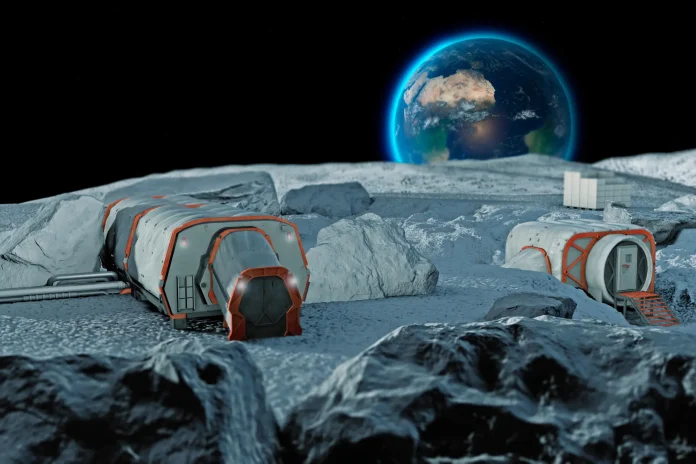British engineering giant Rolls-Royce has released a concept design for the first micro Rolls Royce nuclear reactor, aiming to provide a reliable and long-lasting power source for future lunar colonies. Backed by a £2.9 million grant from the UK Space Agency, this project represents a significant step forward in space technology.
Micro Reactor’s Design and Capabilities
The micro-reactor is designed to generate up to 50 megawatts of electricity and can support a small lunar outpost and its inhabitants for extended human presence on the moon. Revealed at the UK Space Conference in Belfast, the concept model showcases the reactor’s compact size and robust design. Unlike traditional solar power, which relies on sunlight and can be delayed by lunar dust, this Rolls Royce nuclear reactor offers constant, reliable power regardless of weather conditions.
Compact Size and Cost Efficiency
The benefits of a lunar micro-reactor extend far beyond just providing electricity. Its compact size makes it easier and cheaper to transport and utilize on the moon than traditional nuclear reactors. Additionally, its long lifespan, exceeding decades without refueling, reduces the need for frequent resupply missions, minimizing logistical challenges and associated costs.
Technical Specification of Rolls Royce Nuclear Reactor
The mini Rolls Royce nuclear reactor, currently in the concept phase, has impressive technical specifications. It is designed to be a high-temperature gas-cooled reactor (HTGR), generating up to 50 megawatts of electric power – a significant amount considering full-scale nuclear plants typically produce around 1 gigawatt. The reactor will be fueled by enriched uranium and is expected to operate for decades without refueling.
Power Generation
The vision of this mini Rolls Royce nuclear reactor is to play an essential role in many lunar activities beyond simply generating electricity. It could be used to power rovers, drills, and other equipment needed for exploration, facilitating the extraction and processing of lunar resources. Additionally, the reactor could provide reliable energy for 3D printing and other manufacturing processes. The reactor’s potential extends to powering spacecraft propulsion systems, paving the way for more efficient and sustainable space travel.
Timeline for Release
While the concept model is released in 2023, the journey towards a fully operational lunar reactor will require several years of dedicated effort. The next phase involves developing and testing a prototype, anticipated to be completed between 2028 and 2030. By the early 2030s, the reactor is expected to be ready for deployment on the moon. Ensuring the reactor’s safety, reliability, and efficiency in the solid lunar environment creates technical difficulty. The cost of development and deployment is also an important consideration.
Competition in Micro Nuclear Reactor
Rolls-Royce is not the only company fighting to control the potential of nuclear power on the moon. With its ambitions for lunar exploration, NASA has awarded contracts to several companies to develop designs for a 40-kilowatt nuclear reactor that could be operational on the lunar surface as early as 2027. Todd Tofil, the Fission Surface Power project manager at NASA’s Glenn Research Center, summarized the potential impact of this new technology: “This could also be a stepping stone to develop the technology and the experience that we could then take to Mars.”
Future Prospects
Looking beyond the moon, the potential applications of mini-reactors are enormous. They could be used to power other cosmic bodies, such as Mars and asteroids, in the near future, providing a reliable energy source for future exploration missions. Furthermore, this Rolls Royce nuclear reactor could be adapted for earthly use, particularly in remote locations with limited access to traditional grid-based power. In the long run, mini-reactors could be a massive part of making a more sustainable energy future on Earth.
With the development of micro Rolls Royce nuclear reactors, the future of space exploration appears brighter than ever. These innovative and sustainable energy sources have the potential to transform the way we live and work beyond Earth, opening up a new era of lunar exploration and paving the path for humanity’s next giant leap: a journey to the red planet.



